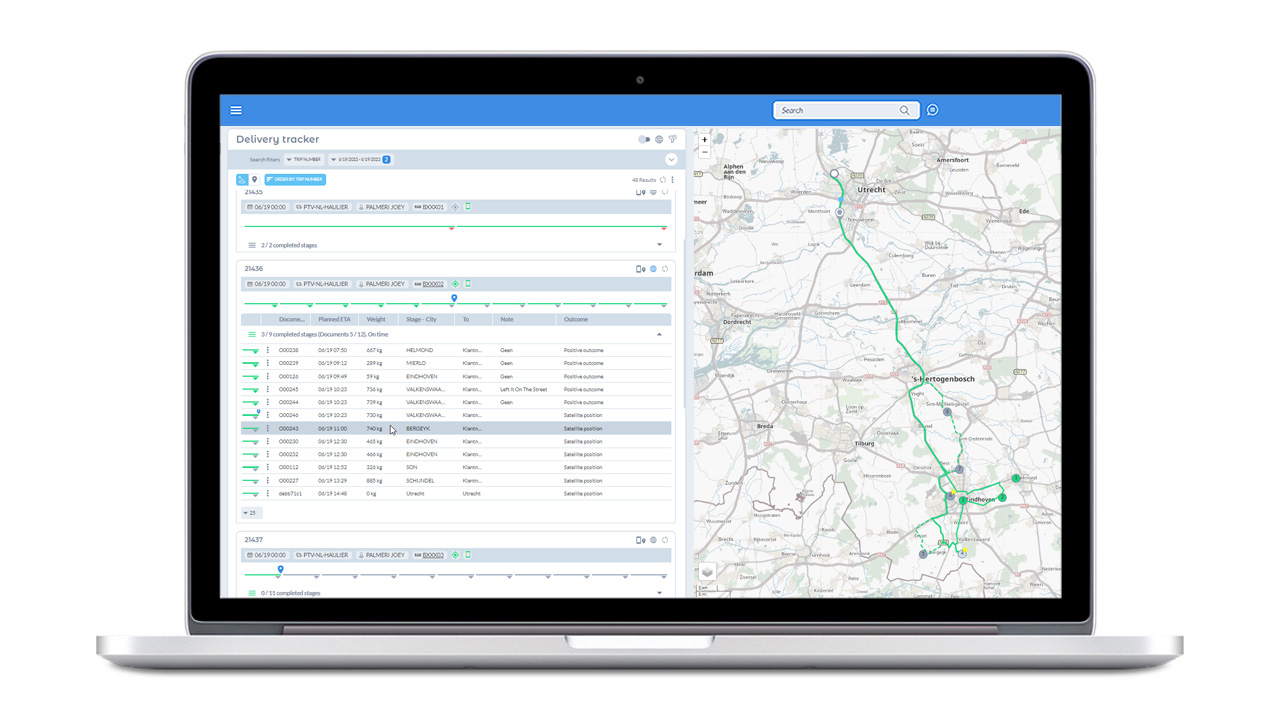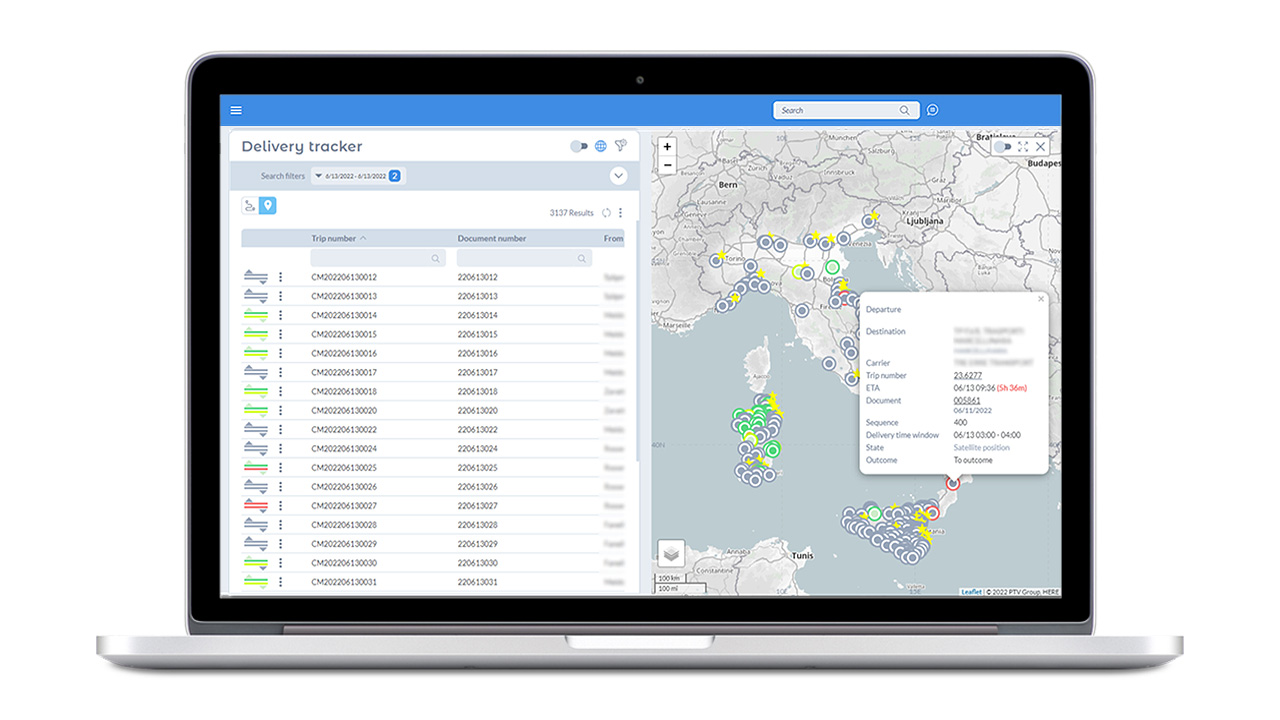At its simplest, transport visibility is about having more control over your transport operations by understanding the status and location of trucks and shipments at any given time. By tracking location in real-time and incorporating other data, such as live traffic updates, transport visibility technology can help planners to anticipate problems and delays and to proactively manage them and minimize disruption as much as possible.
Transportation visibility means giving all stakeholders – including customers – a clearer picture of the delivery process. Customizable notifications enable consignees to track their goods and minimize the impact of any delays more efficiently, and communication between drivers and the transport office can be aided through a mobile app. Tools, such as electronic proof of delivery (ePOD), also alert the seller once the package has been received.




